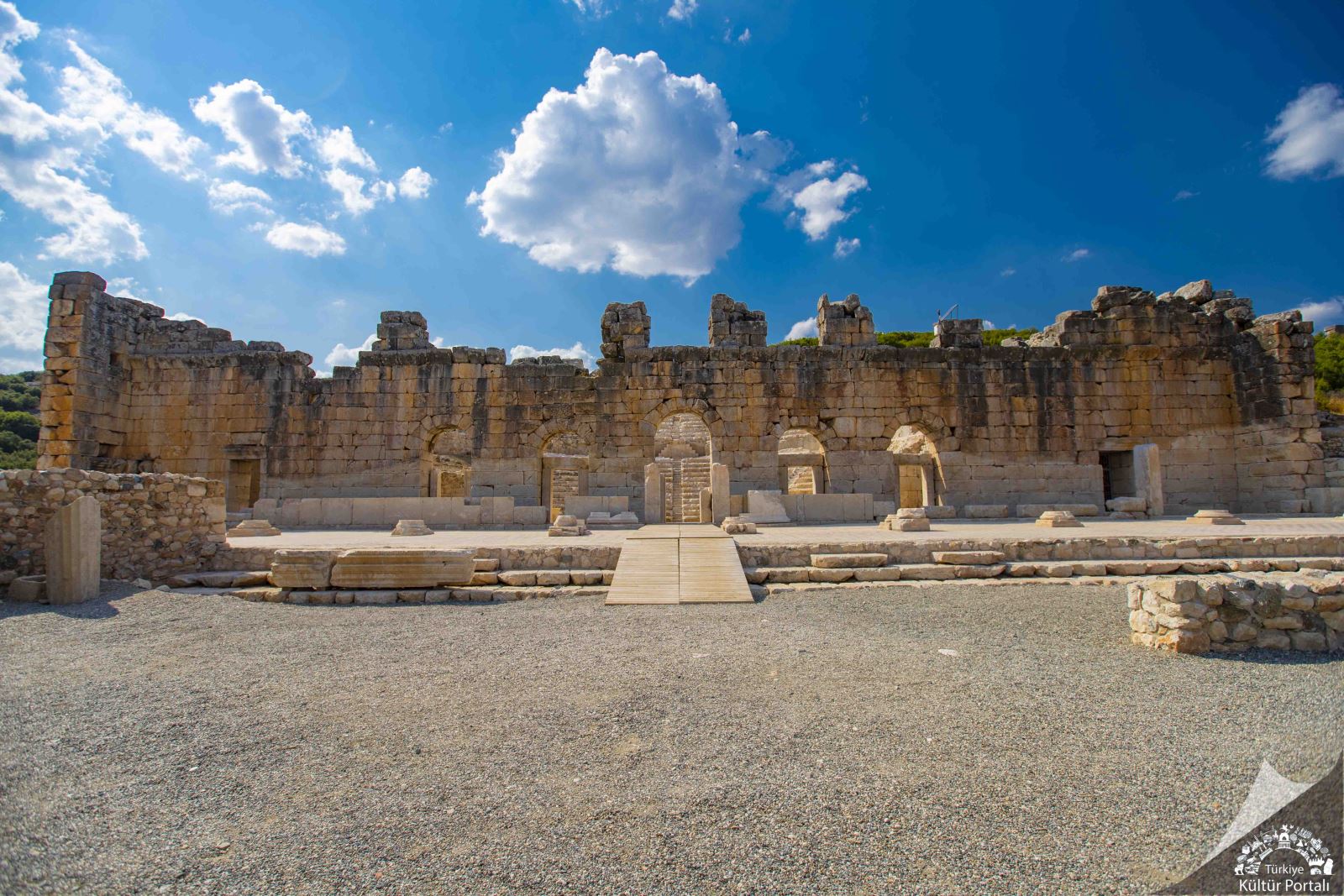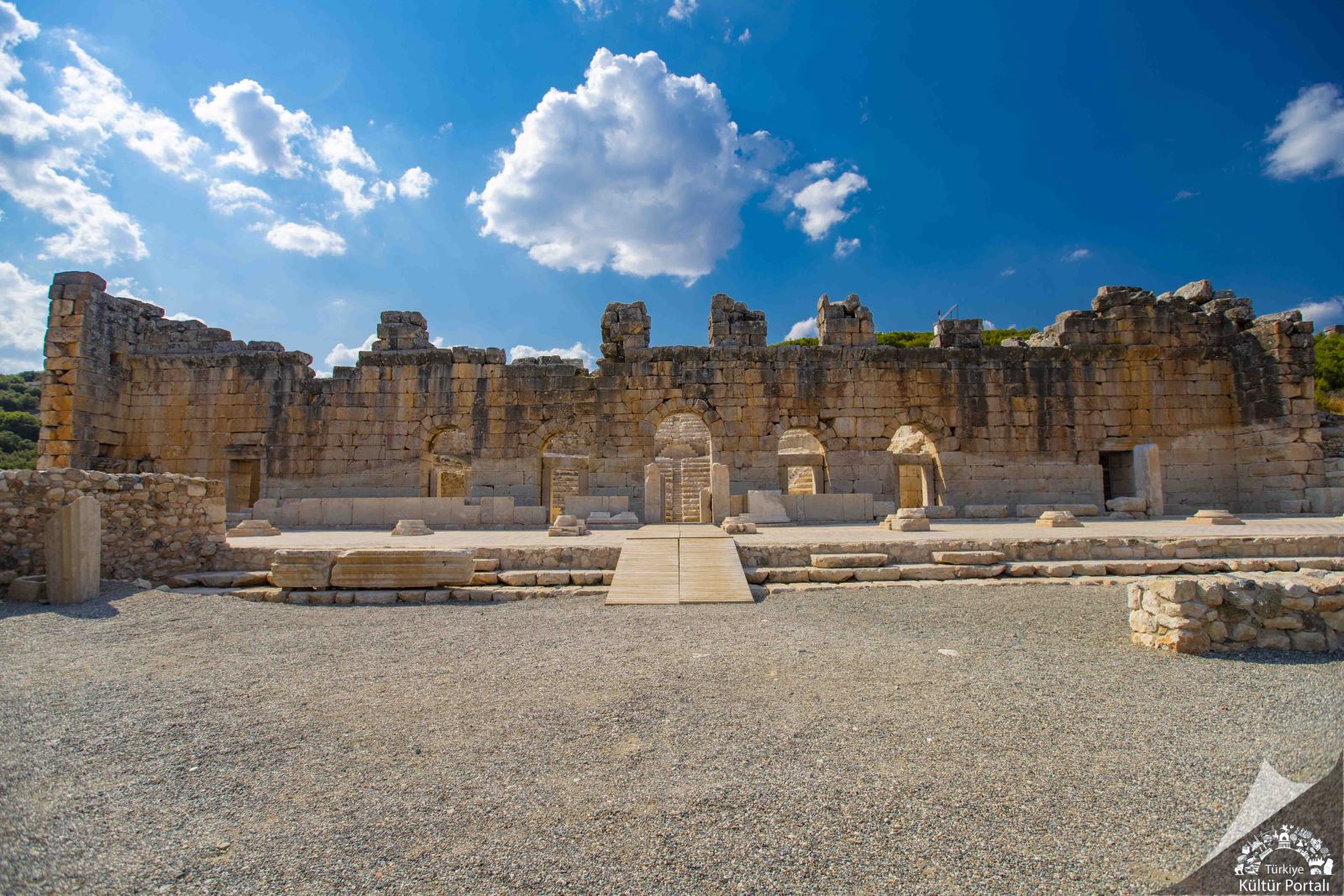Kibyra is an ancient city located in the Gölhisar district of Burdur, in southwestern Türkiye. In antiquity, it was situated at the intersection of the cultural regions of Lycia, Caria, Pisidia, and Phrygia, serving as a center for trade, judiciary, and military affairs during the Roman and Hellenistic periods. Also known as the "City of Gladiators" and the "City of Swift Horses," Kibyra stands out with its stadium, theater, odeion, and the Medusa mosaic.

(Kibyra Ancient City - Türkiye Kültür Portalı)
Location and General Features
Kibyra Ancient City is located in the Gölhisar district of Burdur, at an altitude of 1,100-1,300 meters above sea level, spread over a three-hill area. The city was built in a symmetrical layout, harmonizing with the natural topography. The structures were positioned to dominate the lake and plain views, ensuring that no building obstructs another’s scenery.
Situated at the center of trade routes connecting north to south and east to west in antiquity, Kibyra held great economic, military, and administrative importance due to its strategic location.
History
It is believed that the first settlement of Kibyra was in the Uylupınar region of Gölhisar. According to the accounts of the Greek historian and geographer Strabo, the Kibyrans were originally Lydians who migrated to the Kabalis region and founded a new city there.
In the 2nd and 1st centuries BCE, Kibyra formed a four-city political alliance (Tetrapolis) with Boubon, Balboura, and Oinoanda. This union was dissolved in 82 BCE by the Roman general Murena, and Kibyra was incorporated into the Province of Asia. During the Roman Imperial period, it became the judicial center for approximately 25 subordinate cities and was known as "Kibyra Conventus."
In 23 CE, the city was devastated by a major earthquake but was rebuilt with the support of Roman Emperor Tiberius. In gratitude, the Kibyrans renamed their city "Caesarea Kibyra." Kibyra continued to flourish during the Roman period and was preserved until the Byzantine era, after which it gradually declined and was eventually abandoned.

(Kibyra Ancient City - Türkiye Kültür Portalı)
Architectural Structures and Ruins
Stadium
The Kibyra Stadium, with a 200-meter-long track and a seating capacity of 12,000-13,000 people, is one of the largest and best-preserved ancient stadiums in Anatolia. Initially used for athletic and sporting events, it later hosted gladiator fights. The stadium was built on the western slope, with seating rows integrated into the natural hillside.
Theater
The Kibyra Theater has a seating capacity of approximately 7,500-8,000 people. The seating rows were constructed at a steep angle to provide an unobstructed view of the stage. The theater’s seating areas are accessed through vaulted passages on the southern side.

(Kibyra Ancient City - Türkiye Kültür Portalı)
Odeion
The Odeion of Kibyra was a grand structure used for musical and theatrical performances in antiquity. With a capacity of 3,500 people, it is considered one of the largest enclosed ancient concert halls in the world. It also served as a courthouse and council building.
Medusa Mosaic
Located at the center of the Odeion, the Medusa Mosaic dates back to the 1st century CE. Created using the Opus Sectile technique, it consists of red, green, and white marbles, depicting Medusa, the mythological figure believed to turn people to stone with her gaze. Each winter, expert restorers cover the mosaic to protect it from weather conditions, reopening it for visitors during the summer season.
Baths
Kibyra has two large bath complexes, one dating back to the Roman period and the other to the Late Roman period. The main bath complex spans an area of 5,400 square meters and features an underfloor heating system.
Agoras and Main Street
Kibyra has two agoras, an upper and a lower one. These marketplace areas, which served as key centers of trade and social life, were surrounded by monumental gates and stoas (covered walkways).
Necropolis and Tomb Structures
The Kibyra Necropolis consists of sarcophagi, monumental tombs, and underground chamber tombs. Some sarcophagi feature pediment carvings of shields, floral rosettes, and Medusa heads. Underground chamber tombs were also commonly built in the city.
Excavation Work and Current Status
Archaeological excavations in Kibyra began in 2006. The work has been carried out with funding from the Ministry of Culture and Tourism of Türkiye and under the direction of faculty members from Mehmet Akif Ersoy University. In 2016, Kibyra Ancient City was added to the UNESCO World Heritage Tentative List.
Today, Kibyra is a popular tourist destination, attracting visitors with its Medusa Mosaic and other remarkable structures.

